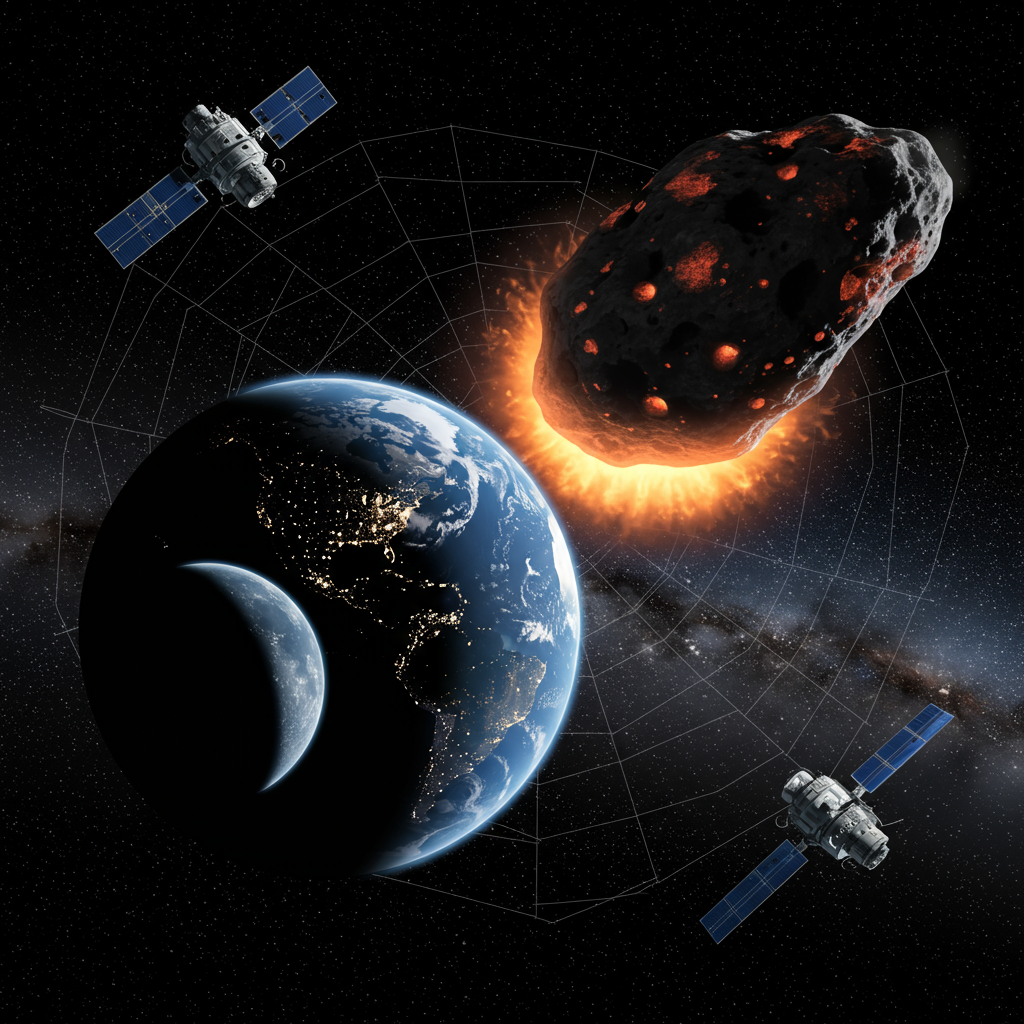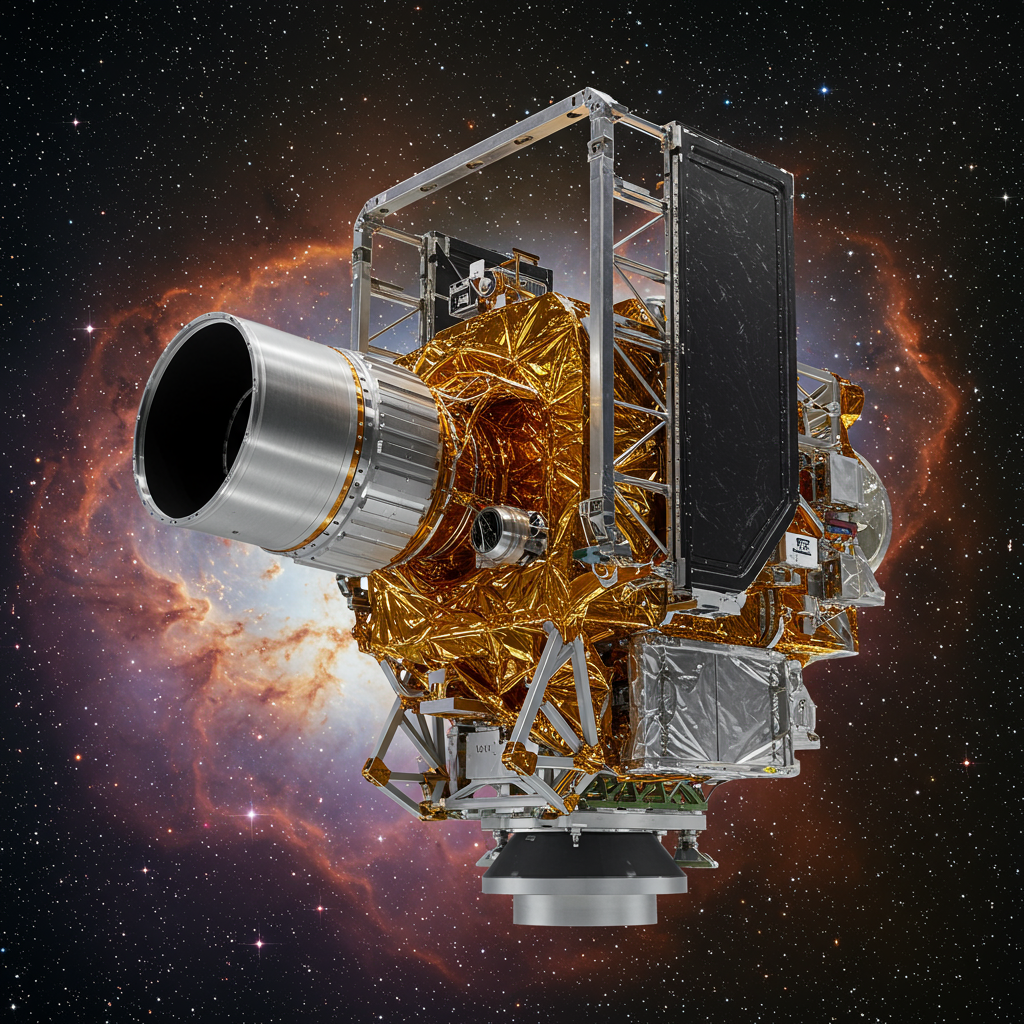An asteroid large enough to level a city could potentially strike the Moon in 2032, according to recent research. While earlier fears of a direct Earth collision have been ruled out, scientists now warn that a lunar impact could have significant consequences for our orbiting satellites and space infrastructure.
The asteroid, known as 2024 YR4, measures roughly 60 meters (200 feet) across – a size often described as a “city-killer” due to the scale of damage it could cause if it hit a populated area on Earth.
Initially, there was a brief period of concern earlier this year when calculations suggested a 3.1 percent chance of 2024 YR4 hitting Earth on December 22, 2032. However, subsequent detailed observations by telescopes, including data from the James Webb Space Telescope, have definitively ruled out any possibility of a direct impact on our planet.
Instead, the focus has shifted to a different potential collision: with the Moon. According to the latest data, the odds of 2024 YR4 striking the Moon have risen to 4.3 percent.
Studying the Lunar Impact Scenario
A new preprint study, which has been published on the arXiv database and submitted for peer review, is the first to model what might happen if this asteroid hits the Moon. Lead author Paul Wiegert of Canada’s University of Western Ontario notes that such an impact would be the largest on the Moon in approximately 5,000 years, releasing energy comparable to a large nuclear explosion and potentially creating a crater around 1 kilometer (0.6 miles) wide.
Using a series of simulations, researchers estimated that an impact by 2024 YR4 could eject up to 100 million kilograms (220 million pounds) of material from the lunar surface.
Crucially, if the asteroid were to strike the side of the Moon facing Earth – which has roughly a 50 percent probability – a significant portion of this ejected debris, potentially ranging from 10 to 30 percent, could be pulled into Earth’s gravity over the following days.
The Threat to Satellites and Space Infrastructure
While Earth’s dense atmosphere would protect the surface from these incoming lunar fragments, causing them to burn up as meteors, the primary concern lies in orbit. The simulations indicate that this influx of debris, ranging in size from 0.1 to 10 millimeters, could dramatically increase the particle impact rates in Earth’s orbit.
According to the study, the days following a near-side lunar impact could see the number of meteors threatening Earth’s satellites increase by 10 to 1,000 times above normal levels. Paul Wiegert describes a centimeter-sized rock traveling at tens of thousands of meters per second as being “a lot like a bullet,” capable of causing significant damage.
With the projected increase in satellite constellations and other spacecraft orbiting Earth by 2032, this risk becomes substantial. High-speed micro-impacts could damage or disable critical satellites used for communication, weather forecasting, GPS navigation, and other essential services. Large constellations like SpaceX’s Starlink could potentially face hundreds or thousands of micro-impacts.
The threat isn’t limited to existing satellites. The study also highlights potential risks to future lunar missions, including NASA’s planned Lunar Gateway space station and Artemis missions returning humans to the Moon. Rovers, landers, and even astronauts could be exposed to debris traveling at potentially lethal velocities, with particles as small as 1mm capable of damaging equipment or piercing spacesuits. Experts warn that simultaneous satellite failures could strain emergency response systems.
A Spectacular Show on Earth
For those of us on the ground, the influx of lunar debris would result in a “spectacular” meteor shower, potentially one of the most vivid in millennia, lighting up the night sky as the fragments burn up harmlessly in the atmosphere.
What Happens Next?
The asteroid 2024 YR4 is currently too distant for precise observation and is not expected to be visible again until 2028. This next close approach will allow scientists to gather more data, refine their trajectory calculations, and get a more definitive likelihood assessment for the potential Moon impact.
If future observations confirm a high probability of a lunar collision, humanity may have enough time to consider options. The scenario presents a unique opportunity to test planetary defense capabilities. Paul Wiegert suggests 2024 YR4 would be a “good target” for a deflection mission, similar to NASA’s successful DART mission in 2022, which altered the path of the asteroid Dimorphos (though 2024 YR4 is roughly half the size of Dimorphos). However, he also cautioned that attempting to deflect an object passing very close to Earth could carry its own risks.
Despite the current uncertainty surrounding the Moon impact probability (estimated at 2 percent for the near side), the potential consequences for our increasingly vital space infrastructure underscore the growing importance of asteroid tracking and planetary defense readiness. The study highlights the need for protective measures not just against direct Earth impacts, but also against hazards created by impacts on the Moon that could affect near-Earth space.




